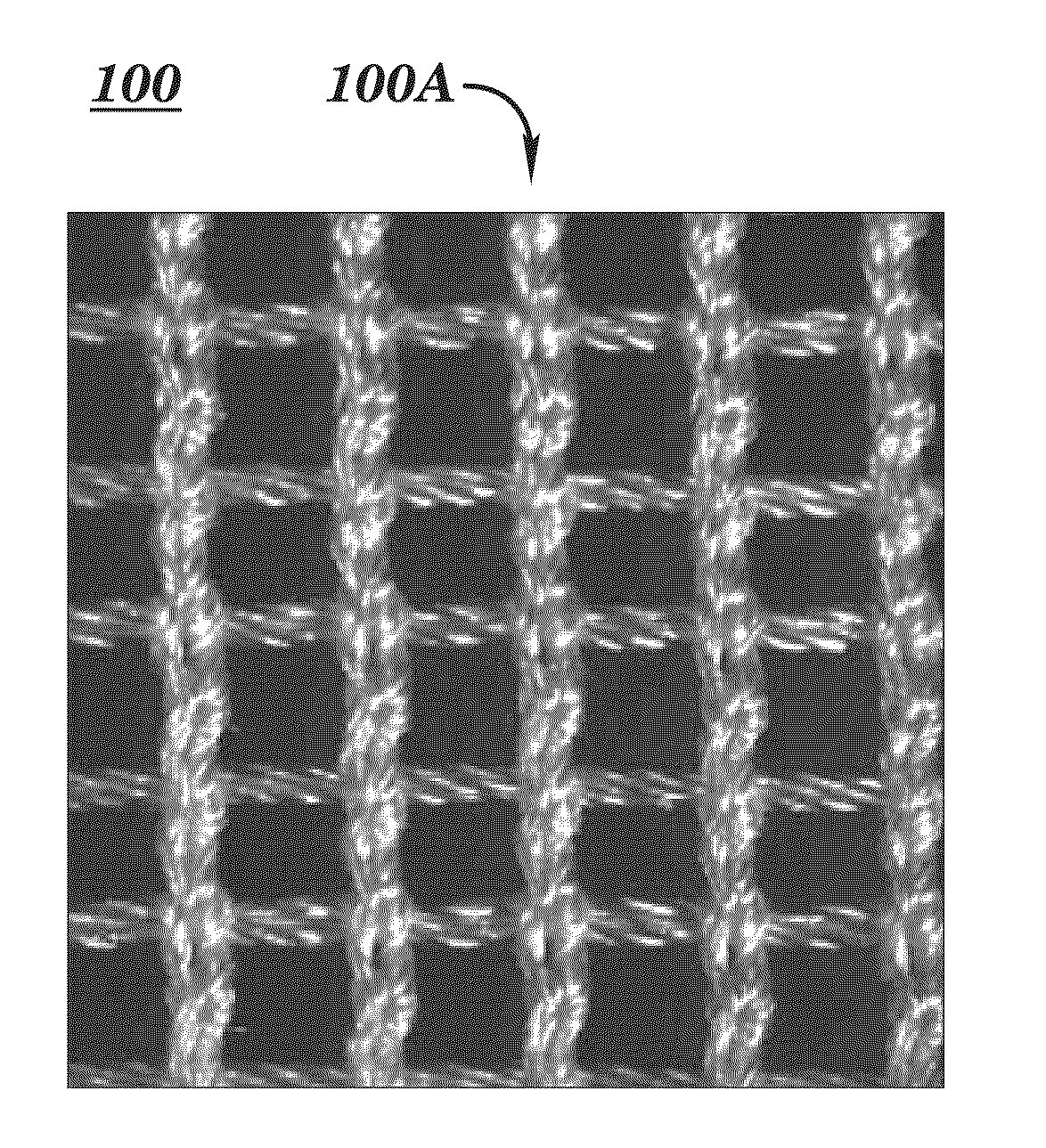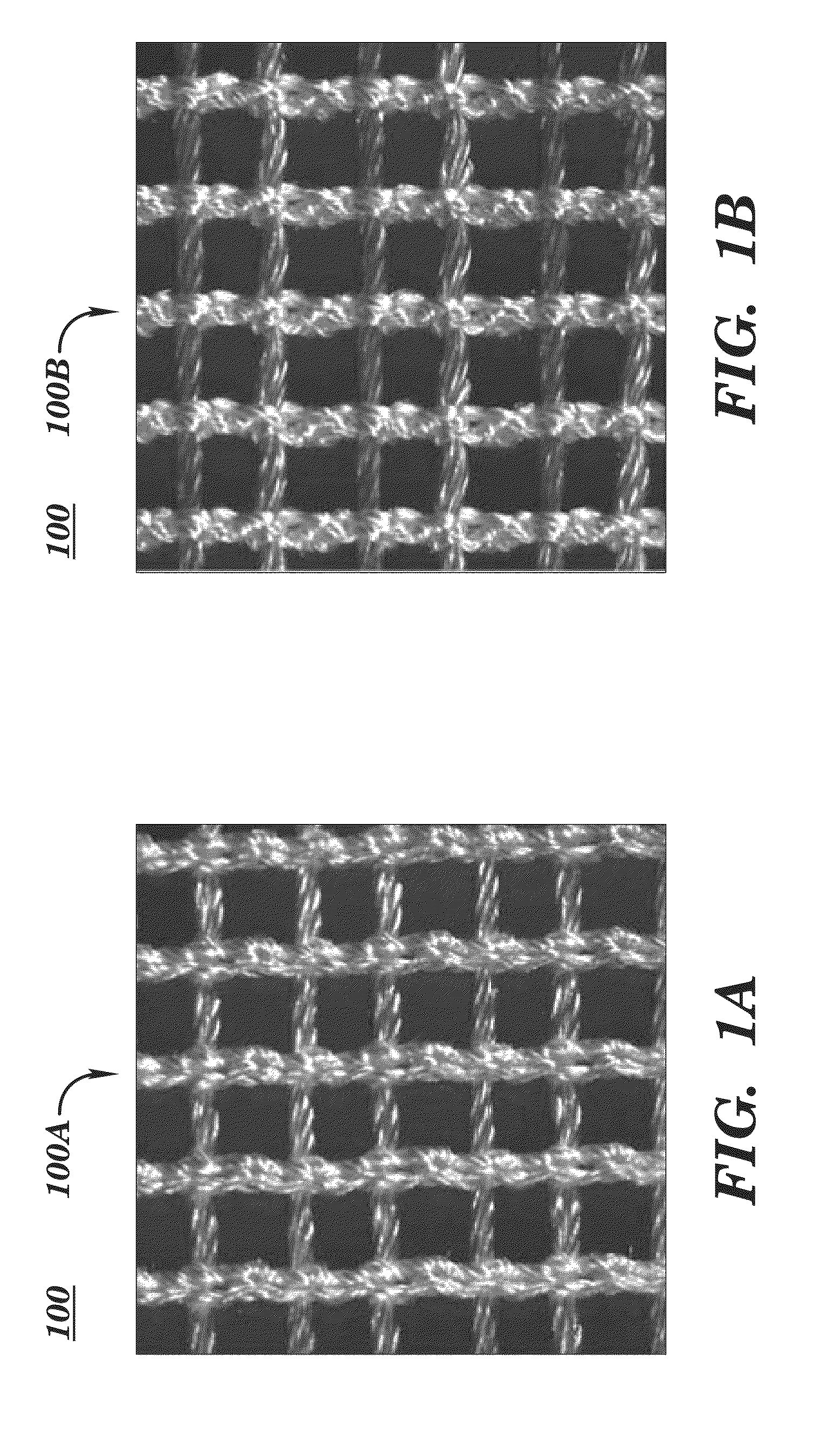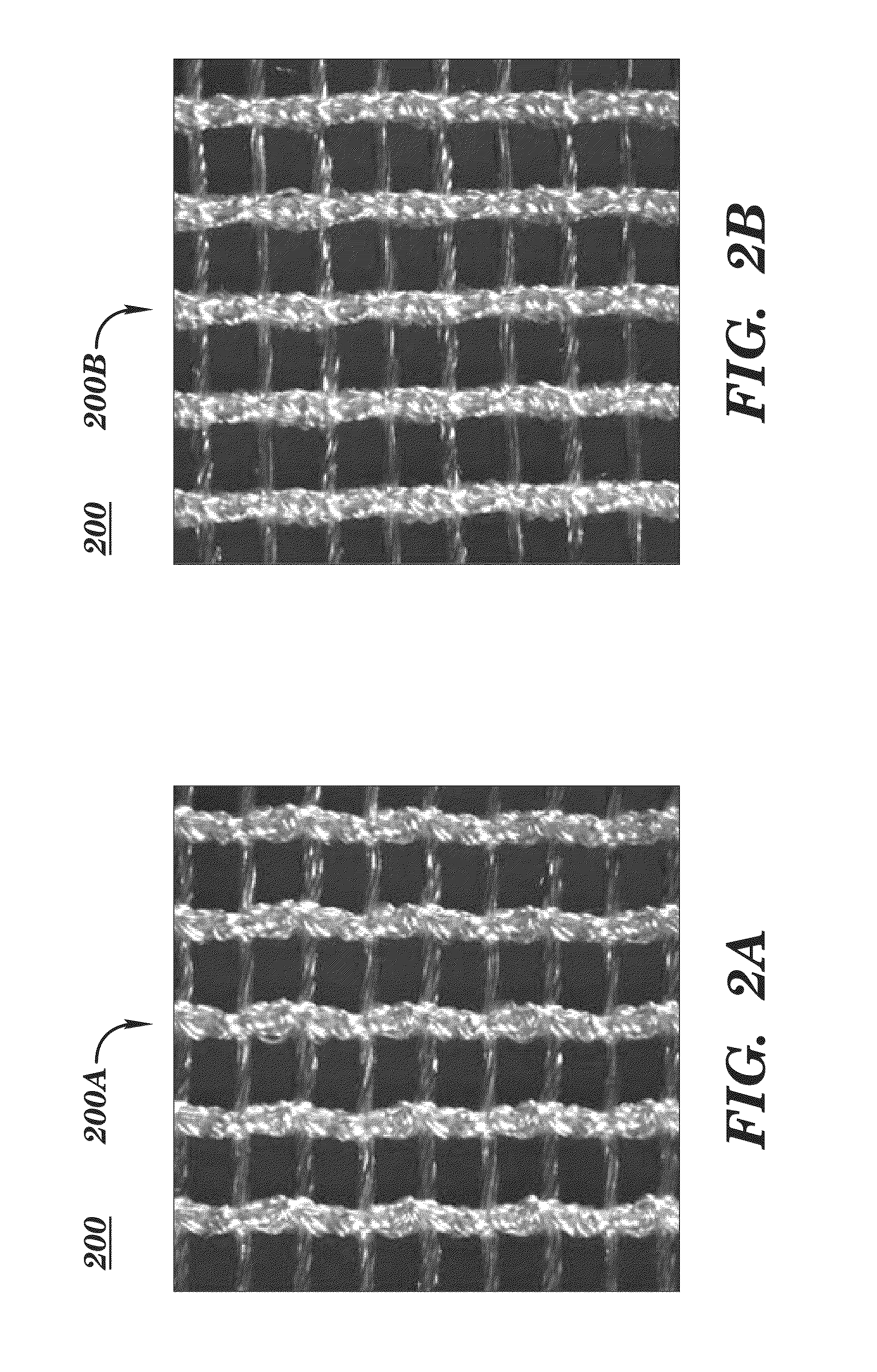Prosthetic device and method of manufacturing the same
a technology of prosthetic devices and meshes, which is applied in the field of surgical silk mesh devices, can solve the problems of scar encapsulation and tissue erosion, pain, and a variety of complications, and achieve the effect of reducing tissue erosion, fistulas, or adhesions
- Summary
- Abstract
- Description
- Claims
- Application Information
AI Technical Summary
Benefits of technology
Problems solved by technology
Method used
Image
Examples
Embodiment Construction
[0122]Embodiments according to aspects of the present invention provide a biocompatible surgical silk mesh device for use in soft or hard tissue repair. Examples of soft tissue repair include hernia repair, rotator cuff repair, cosmetic surgery, implementation of a bladder sling, or the like. Examples of hard tissue repair, such as bone repair, involve reconstructive plastic surgery, ortho trauma, or the like.
[0123]Advantageously, the open structure of these embodiments allows tissue in-growth while the mesh bioresorbs at a rate which allows for a smooth transfer of mechanical properties to the new tissue from the silk scaffold. Furthermore, embodiments employ a knit pattern that substantially prevents unraveling, especially when the mesh device is cut. In particular, embodiments may preserve the stability of the mesh device by employing a knit pattern that takes advantage of variations in tension between at least two yarns laid in a knit direction. For example, a first yarn and a s...
PUM
| Property | Measurement | Unit |
|---|---|---|
| pore size | aaaaa | aaaaa |
| size | aaaaa | aaaaa |
| size | aaaaa | aaaaa |
Abstract
Description
Claims
Application Information
 Login to View More
Login to View More - R&D
- Intellectual Property
- Life Sciences
- Materials
- Tech Scout
- Unparalleled Data Quality
- Higher Quality Content
- 60% Fewer Hallucinations
Browse by: Latest US Patents, China's latest patents, Technical Efficacy Thesaurus, Application Domain, Technology Topic, Popular Technical Reports.
© 2025 PatSnap. All rights reserved.Legal|Privacy policy|Modern Slavery Act Transparency Statement|Sitemap|About US| Contact US: help@patsnap.com



